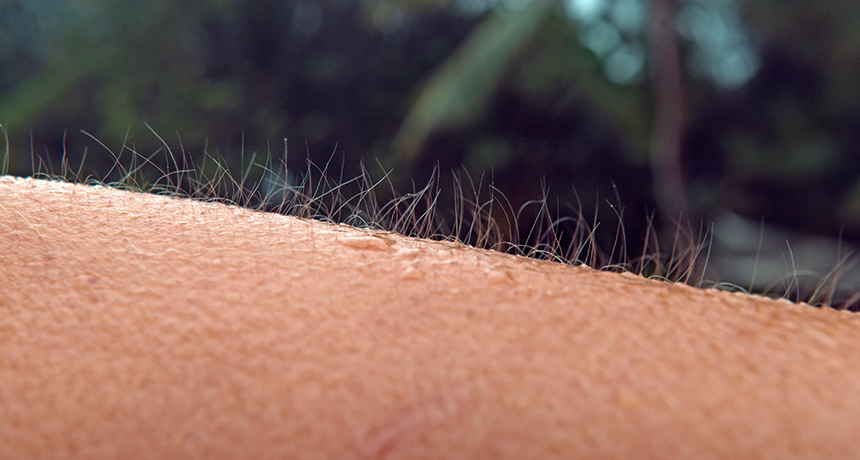biology The study of living things. The scientists who study them are known as biologists.
cell The smallest structural and functional unit of an organism. Typically too small to see with the unaided eye, it consists of a watery fluid surrounded by a membrane or wall. Depending on their size, animals are made of anywhere from thousands to trillions of cells.
contract To activate muscle by allowing filaments in the muscle cells to connect. The muscle becomes more rigid as a result.
follicle The cells and other tissues that surround hair at its root.
function A relationship between two or more variables in which one variable (the dependent one) is exactly determined by the value of the other variables.
gene (adj. genetic) A segment of DNA that codes, or holds instructions, for a cell’s production of a protein. Offspring inherit genes from their parents. Genes influence how an organism looks and behaves.
hair cells These are the sensory receptors inside the ears of vertebrates that allow them to hear. These actually resemble stubby hairs.
heart rate Heart beat; the number of times per minute that the heart — a pump — contracts, moving blood throughout the body.
hormone (in zoology and medicine) A chemical produced in a gland and then carried in the bloodstream to another part of the body. Hormones control many important body activities, such as growth. Hormones act by triggering or regulating chemical reactions in the body. (in botany) A chemical that serves as a signaling compound that tells cells of a plant when and how to develop, or when to grow old and die.
mature (adj.) Connoting an adult individual or full-grown and fully developed (non-juvenile) form of something. (verb) To develop toward — or into — a more complex and full-grown form of some individual, be it a plant, animal or microbe.
molecular biology The branch of biology that deals with the structure and function of molecules essential to life. Scientists who work in this field are called molecular biologists.
muscle A type of tissue used to produce movement by contracting its cells, known as muscle fibers. Muscle is rich in protein, which is why predatory species seek prey containing lots of this tissue.
myelin (also as in myelin sheath ) A layer of fatty cells, called glia, that wrap around nerve-cells axons. The myelin sheath insulates the axons, speeding the rate of at which signals speed down them.
nerve A long, delicate fiber that transmits signals across the body of an animal. An animal’s backbone contains many nerves, some of which control the movement of its legs or fins, and some of which convey sensations such as hot, cold or pain.
nervous system The network of nerve cells and fibers that transmits signals between parts of the body.
norepinephrine A type of stress hormone secreted by the adrenal glands. It constricts blood vessels. It also increases the force and rate at which the heart contracts.
plastic Any of a series of materials that are easily deformable; or synthetic materials that have been made from polymers (long strings of some building-block molecule) that tend to be lightweight, inexpensive and resistant to degradation.
pupil The dark center of an eye. The pupil is actually a hole in the eye that allows light to pass through and hit the retina, the part of our eye that is sensitive to light.
secrete (noun: secretion) The natural release of some liquid substance — such as hormones, an oil or saliva — often by an organ of the body.
stem cell A “blank slate” cell that can give rise to other types of cells in the body. Stem cells play an important role in tissue regeneration and repair.








